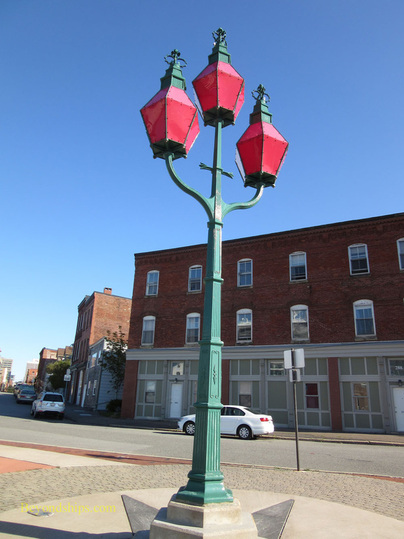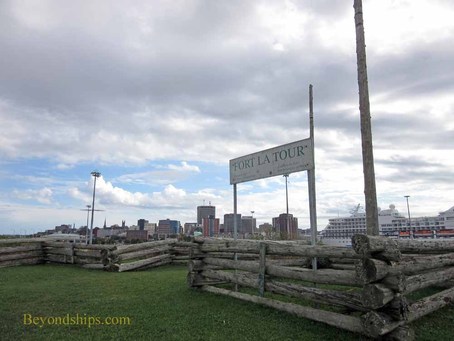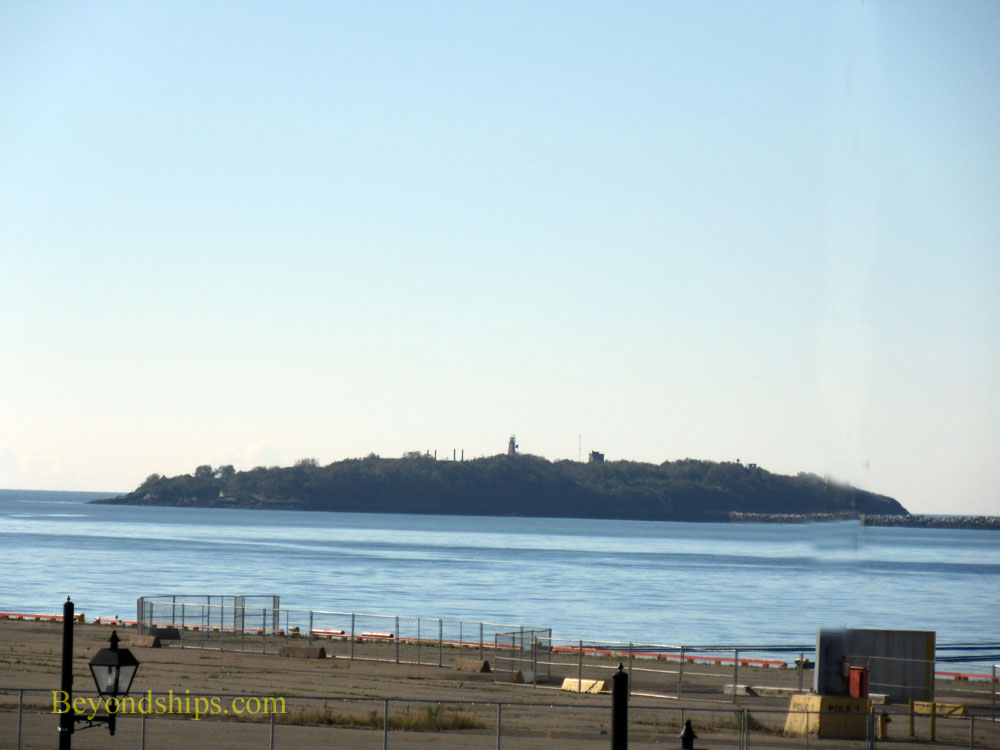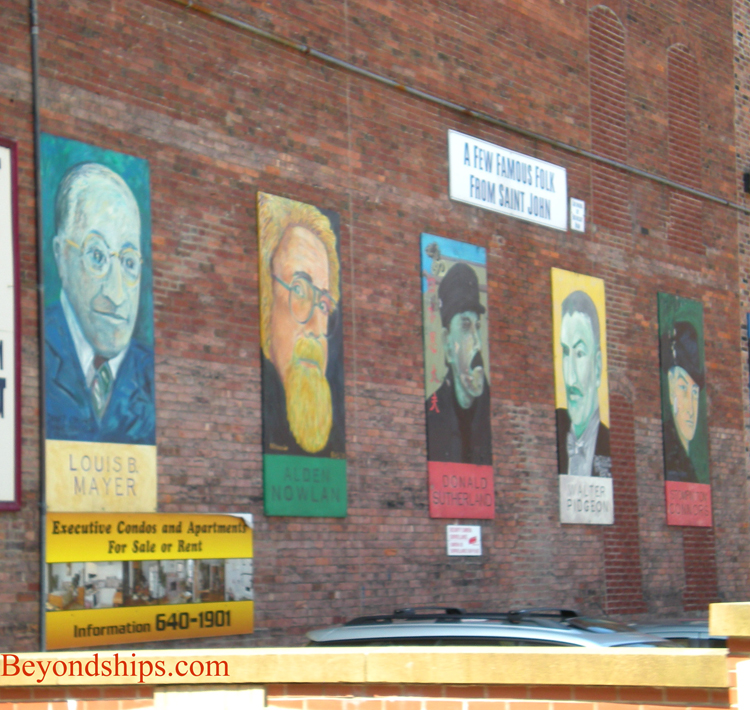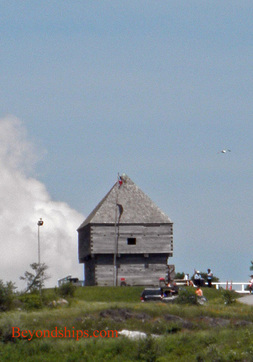CRUISING TO CANADA AND NEW ENGLAND:
|
Above: Three Sisters Lamp is a landmark in St. John. Sailors entering the harbor at night knew if they could see all three red lights, their ship was on the right course. If they could see only one or two, they needed to alter course.
|
|
French explorer Samuel de Champlain sailed into the area on June 24, 1604 and because it was the feast day of
St. John the Baptist, he called the place Saint John. Champlain found the Native Americans that lived in the area eager to trade and subsequently French traders visited the area frequently. In 1635, Charles La Tour opened a trading post here, the first European settlement. A rival trader captured it in 1645 while La Tour was absent. His wife, however, conducted such a spirited defense, however, that she became known as the "Heroine of Acadia." In 1713, the Treaty of Utrecht in 1713 gave all of Arcadia to Britain. However, the boundaries were unclear and areas remained primarily French. The Saint John settlement was occupied by the British during the French and Indian War in 1758. During the American Revolution, a large number of colonists remained loyal to the British crown and some even fought in the British Army. Having backed the losing side, these people were often no longer welcome in the United States and many fled to Canada, which remained British. On May 18, 1783, some 3,000 Loyalists arrived by ship in Saint John. Later in that year, they were joined by another 11,000 Loyalists. By the end of the first year, they had built 276 buildings but a fire destroyed most of them and the city had to be re-built. The new arrivals petitioned for a Royal Charter for their new city and one was granted in 1785. Thus, while there are older cities in Canada, Saint John was the first one to be officially incorporated. The potato famine in Ireland caused another group of refugees to come to Saint John. Some 30,000 Irish immigrants arrived in the 1840s giving the city a strong Irish heritage. During the 19th Century, the City grew as a commercial and shipbuilding center. However, on June 20, 1877, a fire ravaged the city destroying 1,600 buildings including the business district. Consequently, as in 1784, almost the entire city had to be re-built. |
Above: The site of Fort La Tour is along the Harbour Passage walkway.
Above: Partridge Island at the mouth of the harbor was a major point of entry for European immigrants to Canada in the 19th and 20th centuries.
Above: A wall mural portrays some of the famous
people who have been associated with Saint John including movie mogul Louis B. Mayer and actor Donald Sutherland. |
Cruise destination profile - Saint John, New Brunswick, Canada - page 2
